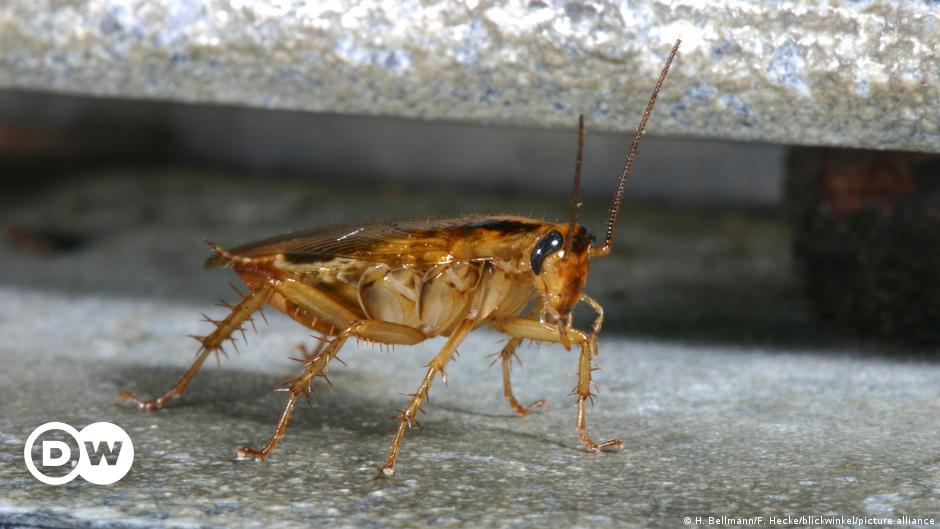World
How the German cockroach conquered the world – DW – 05/24/2024

Cockroaches boast some impressive skills: They can move incredibly fast, they can make themselves totally flat in order to squeeze through tiny cracks, and their feet are equipped with special adhesive organs, as well as claws, that enable them to climb even smooth vertical surfaces.
Above all, cockroaches are incredibly resilient. A roach’s carapace is capable of resisting 900 times its body weight, which makes them virtually unsquashable. Even most insecticides have little effect on them.
And this is a big problem, because cockroaches act as vectors for a great many bacteria, viruses and fungi. They can trigger allergies and cause diarrhea, colitis, hepatitis A, anthrax, salmonella and tuberculosis. Cockroaches can also spread foot-and-mouth disease.
German cockroach’s triumph
The most successful cockroach — i.e., the one most widely found around the world — is the German cockroach (Blattella germanica). It’s an unwelcome companion in human habitation on every single continent. Up to 2 centimeters (0.8 inches) long and nocturnally active, the brown insect is especially fond of places that are dark and damp. However, it is not found in the wild.
The German cockroach was first classified by the Swedish naturalist Carl Linnaeus in 1776, not long after the Seven Years War, when half of Central Europe lay in ruins amid widespread poverty.
He called the insect the “German cockroach,” because Germany was where he had collected his specimens.
Until recently, the true origin of the German coackroach was unclear. Now, though, a team led by Qian Tang from the National University of Singapore has reconstructed the cockroach’s lineage, to establish where it came from and how it spread around the world. Tang and his team of researchers studied and compared the DNA sequences of 281 cockroaches from 17 countries on five continents.
South Asia origins
The analysis revealed that the German cockroach evolved from the Asian cockroach (Blattella asahinai) about 2,100 years ago. The two species are still very similar today. According to the researchers, the insects originally adapted to human settlements in India and Myanmar.
From there, the species spread westward over the centuries along two routes. About 1,200 years ago, it benefited from the economic and military spread of Islam; then, around 400 years ago, from European colonialism, probably the expansion of Britain and the Netherlands in particular.
As late as the first half of the 18th century, “the German cockroach was still mostly contained within Asia,” the group wrote in PNAS, the journal of the US National Academy of Sciences. This changed in the second half of the century, coinciding with the first descriptions of the insect by Linnaeus.
The beginning of long-distance global trade facilitated the roach’s conquest of the world, as it was able to avail itself of ever-faster modes of transport. “The German cockroach then spread to the rest of the world between the late 19th and early 20th century,” according to the study.
German cockroach flourishes
Wherever they went, the roaches found ideal conditions in houses that had heating and internal plumbing. The mortality rate of these cold-sensitive insects therefore dropped significantly, even in chillier regions.
“The rise of human civilization has triggered the evolution and spread of commensal species adapted to urban environments,” according to the research.
The cockroaches feel particularly at home in damp, warm buildings, because the only thing these cold-blooded creatures don’t tolerate well is dryness. In modern houses with no damp corners, they quickly die of thirst.
The researchers also cite another reason why the German cockroach has been so successful in colonizing the world: Compared with other roaches, it is particularly resistant to insecticides. Chemicals are not very effective against cockroaches, as insects who are resistant to one active ingredient can become immune to others as well within a single generation.
Within a few months, the surviving roaches can rebuild the entire population. The lifespan of a cockroach is, on average, only about three months, so immunity develops incredibly fast, as the genes of resistant cockroaches are passed on to the next generation.
This article was originally written in German.








